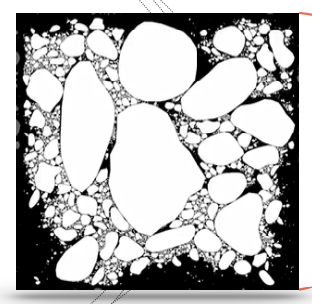Romain Caneill, postdoc at the French National Center for Scientific Research (CNRS), recently joined SASIP to work on sea-ice rheology (WP2) and climate implications WP5. He accepted to share his scientific history, vision of science, motivations and hopes.
“I hope that at the end of the SASIP project, the ocean-atmosphere community will acknowledge the important role of sea ice and the fact that its dynamics need to be well represented in climate models.”
An interview with Romain Caneill, Postdoc at CNRS,France.
By: Solène Guyard.
Thursday, March 7, 2024.
How did you become a scientist ? Was a life in research something you always have envisioned for yourself ?
As far as I remember, I have always been interested in understanding the world around me. This is probably why I studied physics. Very early, I knew I would follow a scientific career.
What do you study ? What has ignited your passion for studying these questions in particular ?
I completed my PhD in physical oceanography. I studied the interlinked role of the thermodynamics of seawater and buoyancy fluxes in shaping the upper ocean stratification. This was a quite theoretical study in which I aimed to understand the large-scale properties of the ocean based only on some key processes. The thermodynamics of seawater largely control the location of the transition between temperature-controlled stratification (called alpha oceans, located in the subtropics) and salinity-controlled stratification (beta oceans, located in polar regions). Near the transitions are deep mixed layers in winter that help bring anthropogenic carbon to depth, thus mitigating climate change. These key processes I mentioned are thus important for the large-scale circulation of the ocean, thereby impacting the whole climate system.
The passion for studying the Earth probably still lays in a little child who wants to understand the world around him.
Why is it important to study these questions ?
I believe that knowledge is one great cause we can work for. It seems to me that humans have always wanted to understand the world. Nowadays, in the context of human induced climate change, better understanding of the climate becomes crucial. Without the pioneer work of scientists in the previous century, we may have never noticed that humans are impacting the climate and all life on Earth. Climate policies and habit changes may be slow to happen, but in any case, they need to be backed up by science.
What made you join SASIP ? What aspects of the project do you appreciate most ? What is motivating your day-to-day work ?
SASIP is a great and ambitious project. The polar regions encounter the largest change, and the sea-ice surface is shrinking every year. I believe that we need to better understand sea-ice dynamics and its impact on a global scale, both because it is an interesting geophysical object and to better forecast possible future scenarios. Moreover, SASIP aims to build a new free and open model based on state-of-the-art tools and methods. As a free open source software enthusiast and computer science nerd, these are values that I fully embrace.I think that the two points I mentioned are day-to-day motivators: I like to write nice code applied to geoscience, and I keep in mind the long-term goal, which is to better understand the world. I will also be honest; research is a job, not only a passion, and I am paid to do my job. This is only a pecuniary motivation, but with a family, it also becomes important.
What’s difficult ?
Research is difficult, as usually you don’t really know what you are doing until you find something and see the bigger picture. So it is sometimes hard to not get lost and keep the motivation. Being in a big project like SASIP will for sure help me staying on track with the help of all connections between people.
What kind of impact do you hope the project will have ?
I hope that at the end of the SASIP project, the ocean-atmosphere community will acknowledge the important role of sea ice and the fact that its dynamics need to be well represented in climate models. SASIP is also motivating climate-friendly research, and I believe that such a big project with great scientific outcomes can show the community that good research can be done with a reduction of the carbon footprint.



